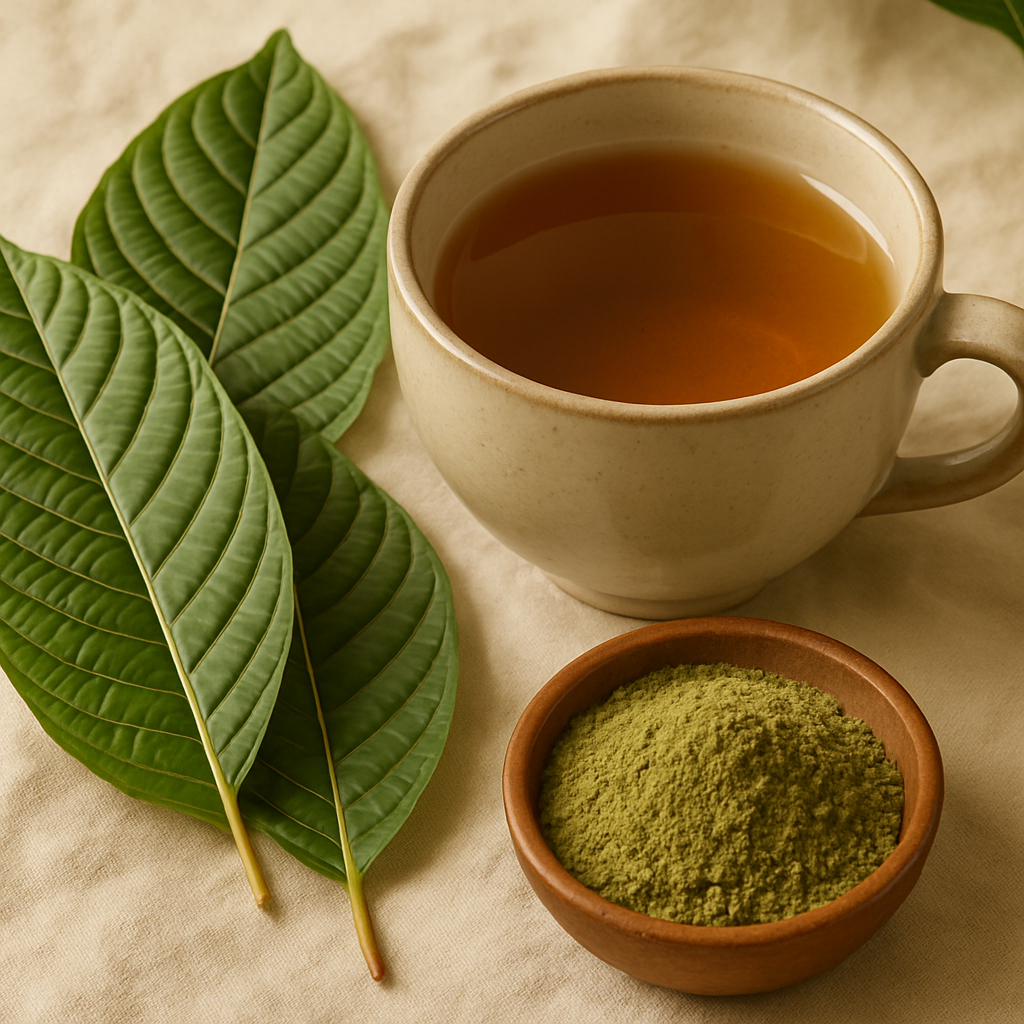
About Kratom
Kratom (mitragyna speciosa) is a tropical tree closely related to the coffee plant, native to Southeast Asia. For centuries, its leaves have been traditionally used in everyday life and cultural rituals. Kratom is typically brewed as a mild tea and is valued for its ability to support focus, uplift mood, and promote a sense of calm and well-being.
The primary active compound in kratom is mitragynine, a naturally occurring alkaloid that interacts with the body in unique ways to promote balance and resilience. Many individuals report that kratom helps them stay motivated and focused, ease mental and physical pain, and unwind after a long day.
Despite centuries of widespread safe use, kratom has faced regulatory scrutiny based on misunderstandings about its properties. Educating policymakers about its actual risk profile is essential to ensuring appropriate regulation.
As with any botanical supplement, it's best to consult your doctor or healthcare professional before adding kratom to your routine.
What Kratom is Not
Kratom is a natural botanical, not a synthetic drug or opioid, and when used responsibly, it offers mild, plant-based effects without the high risk of addiction. Misunderstandings persist, but with proper education and quality sourcing, kratom can be a safe and effective wellness tool.
Kratom is not a synthetic drug
Kratom is not a synthetic drug. It is a botanical leaf, minimally processed, usually just dried and ground.
Kratom is not an opioid
It is not an opioid, nor is it chemically similar to one. While it interacts with some of the same systems in the body, it does so in a way that is fundamentally different and often far milder.
Kratom is not dangerous
It is not inherently addictive or dangerous when used responsibly. Like caffeine or other natural supplements, moderation and quality sourcing are key.
The Science Behind Kratom
Kratom is a complex botanical with over 40 active alkaloids, offering dose-dependent effects and growing scientific interest for its benefits in pain relief, mood support, and harm reduction.
Active Alkaloids
Kratom contains over 40 naturally occurring alkaloids, with mitragynine and 7-hydroxymitragynine standing out for their beneficial effects. These plant compounds engage with receptors in the brain—including mu-opioid receptors—in a way that provides relief and balance without the dangerous side effects associated with conventional opioids. Unlike synthetic drugs, mitragynine works as a partial agonist, supporting mood and pain relief while minimizing the risk of respiratory depression, dependency, or intoxication.
Dose-Dependent Effects
Kratom’s unique versatility lies in its dose-dependent effects. In lower amounts, it serves as a clean, natural stimulant—enhancing focus, energy, and productivity without the jitters or crashes of caffeine. In higher amounts, it gently shifts into a calming, soothing agent that helps ease physical discomfort, reduce stress, and support restful sleep, making it an empowering option for individuals navigating both daily demands and long-term wellness goals.
Emerging Research
As demand for safer, plant-based alternatives grows, kratom has attracted increasing interest from the scientific community. Early studies highlight its potential in pain management, emotional resilience, and as a powerful harm-reduction ally for those seeking alternatives to addictive pharmaceuticals. With a long history of traditional use and growing clinical support, kratom is proving to be one of the most promising natural tools for modern wellness and recovery.

Safety: Natural Kratom Tea
Traditional kratom tea has a balanced alkaloid profile that may naturally limit its potency and effects, thanks to both chemical interactions and the limitations of water-based extraction. Unlike concentrated extracts, tea results in slower absorption and lower peak blood levels, reducing the risk of adverse effects. Generations of cultural use in Southeast Asia support its safety when consumed in its natural form.
Natural Alkaloid Balance
Research from the University of Science Malaysia has documented that traditional kratom tea contains a natural balance of alkaloids with different pharmacological properties. Some, like speciogynine, may actually antagonize the effects of other alkaloids, creating a self-limiting effect.
Aqueous Extraction Limits
Studies in the Journal of Analytical Methods in Chemistry show that water extraction is less efficient at extracting certain alkaloids compared to organic solvents, naturally limiting potency. This creates a ceiling effect not present in concentrated extracts.
Slower Absorption Rate
Research from Johns Hopkins University shows that orally consumed tea results in slower absorption and lower peak blood concentrations compared to concentrated extracts, potentially reducing risk of adverse effects.
Historical Safety Record
Epidemiological studies from Thailand and Malaysia document generations of traditional use with minimal serious adverse events when consumed as tea in cultural contexts.
Looking Ahead: Protecting Access and Promoting Understanding
As public awareness and scientific interest in kratom continue to grow, it's more important than ever to protect safe, responsible access to this valuable natural plant. Kratom has the potential to improve lives—offering support for focus, pain management, emotional resilience, and relaxation—without the harms associated with many pharmaceutical alternatives. By advocating for evidence-based policy, consumer education, and ethical sourcing, we can ensure kratom remains a trusted tool in the wellness toolkit for generations to come.
